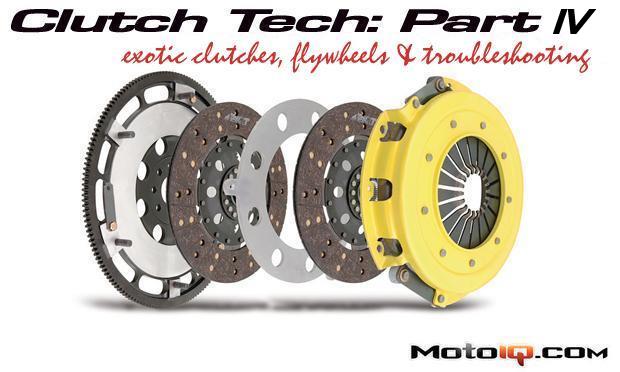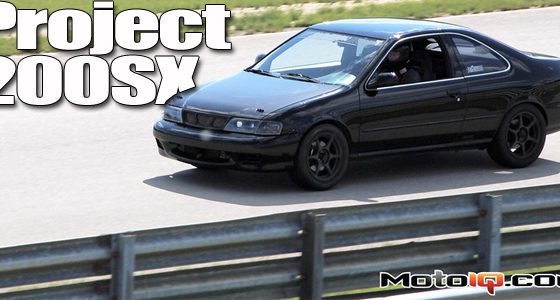,
 |
| This racing ACT twin disc has a small 7.25 diameter for a real low moment of inertia. This is great for full race applications but it could have a shorter life on the street. |
The Multi Disc Clutch
If you are limited in physical area to package a clutch that can hold a large amount of power or you do not want an astronomically high clamping pressure for the pressure plate with the strain on your left foot and engines thrust bearing to boot, then a multi disc clutch is the solution. Powerful four wheel drive cars like the EVO, WRX, one of the Diamond Star twins are notoriously hard on clutches. Six cylinder cars like the Supra or the Twin Turbo Z are notoriously hard on clutches with their heavy weight and potential for huge amounts of power. When you have one of these cars and the horsepower starts to creep past the 500 hp mark a multi disc is one of the only ways to have a streetable clutch that can withstand repeated drag style launches.
 |
| ACT makes an extensive line of streetable multi disc clutches with many options of disc construction and friction material, enough options to hold just about any amount of power with ranges of smoothness from near stock to full race. The streetable clutches feature bigger 9.5 inch discs for durabilty and long service life. |
Basically a multi disc clutch has two or more clutch discs instead of just one with a floater plate that is coupled to the flywheel via drive lugs in the pressure plate in between the discs. A dual disc clutch basically has the torque capacity of two clutches of the equivalent diameter in the space of one. Sometimes race cars use multi disc clutches so the diameter of the clutch assembly can be made smaller to greatly reduce the rotational inertia of the clutch package. Since the formula for the inertia of a rotating disc is ½ x the mass of the disc x the radius of the disc squared, it’s easy to see that the diameter of the disc and hence the clutch assembly has a great effect on the inertia of the clutch.
 |
| Jim Wolf Technology built this one off carbon carbon 5.5 inch clutch with a super low moment of inertia. The ultimate friction material for a racing clutch is carbon. Carbon is smooth, heat resistant and expensive. This clutch can hold 550 ft lbs of torque even though its only 5.5” in diameter. It drives very smoothly as well. |
Typically racing dual disc clutches have discs of only 7.25 inches or so. By having two, three or even four discs the frictional surface of the clutch can be maintained for a high torque capacity even though the diameter of clutch discs themselves can be shrunk to as little as 4.5″ for a clutch that can hold up to 800 lb/ft of torque. Since the radius of the clutch has considerably more of an effect on inertia than its mass, a small diameter multi disc clutch can have a lower inertia and be quicker revving than a lighter single disc clutch of a larger diameter. This is common in very light road racing or oval track cars where maximum throttle response is needed. A clutch with this low inertia might not be practical for street or drag racing usage, especially on a heavy car with lots of traction. Tilton and Quartermaster make most of the multi disc applications in North America.
 |
| This OS Giken twin metal disc clutch has sprung hubs to make it smoother and quieter in use. It is streetable despite the aggressive friction material. |



